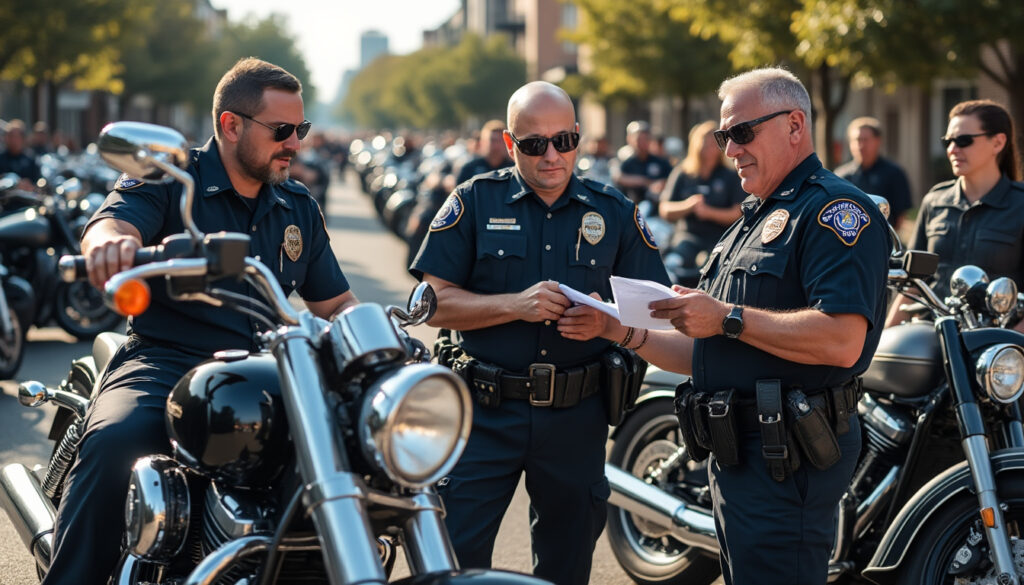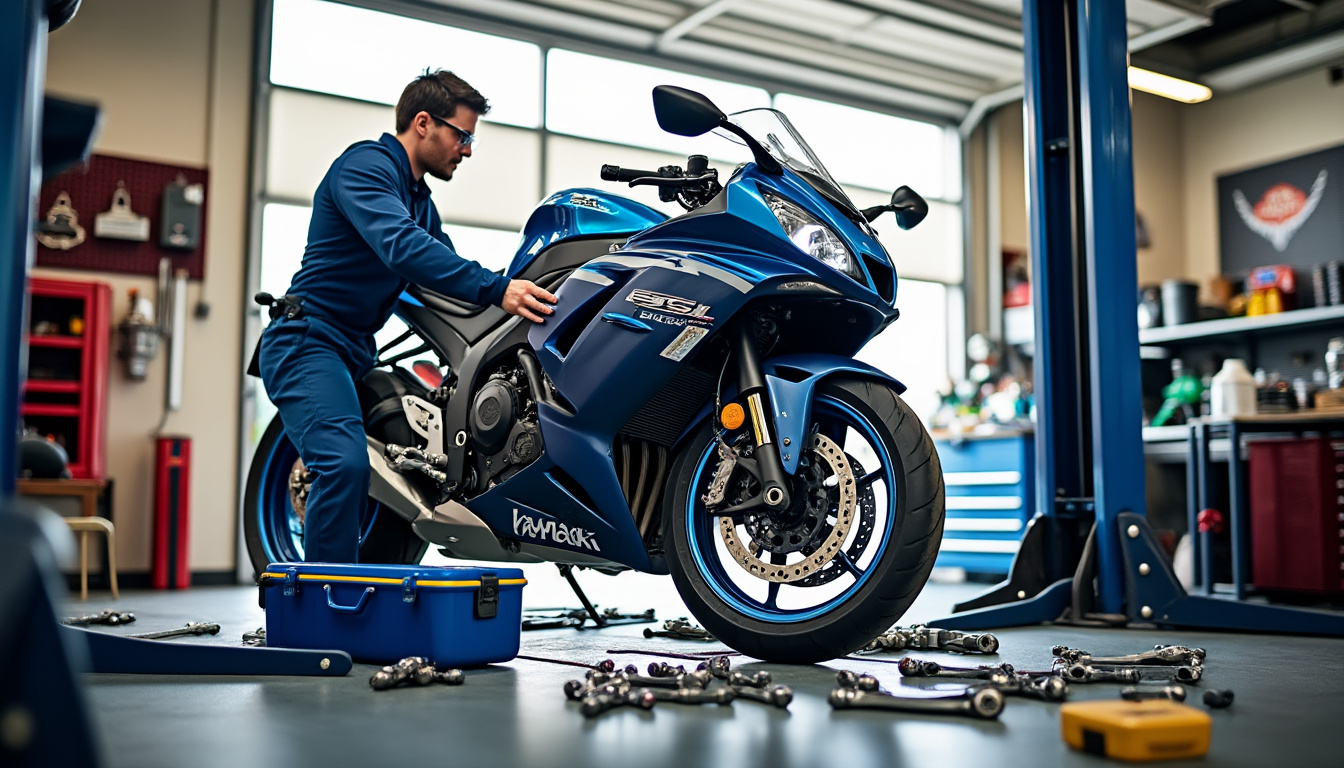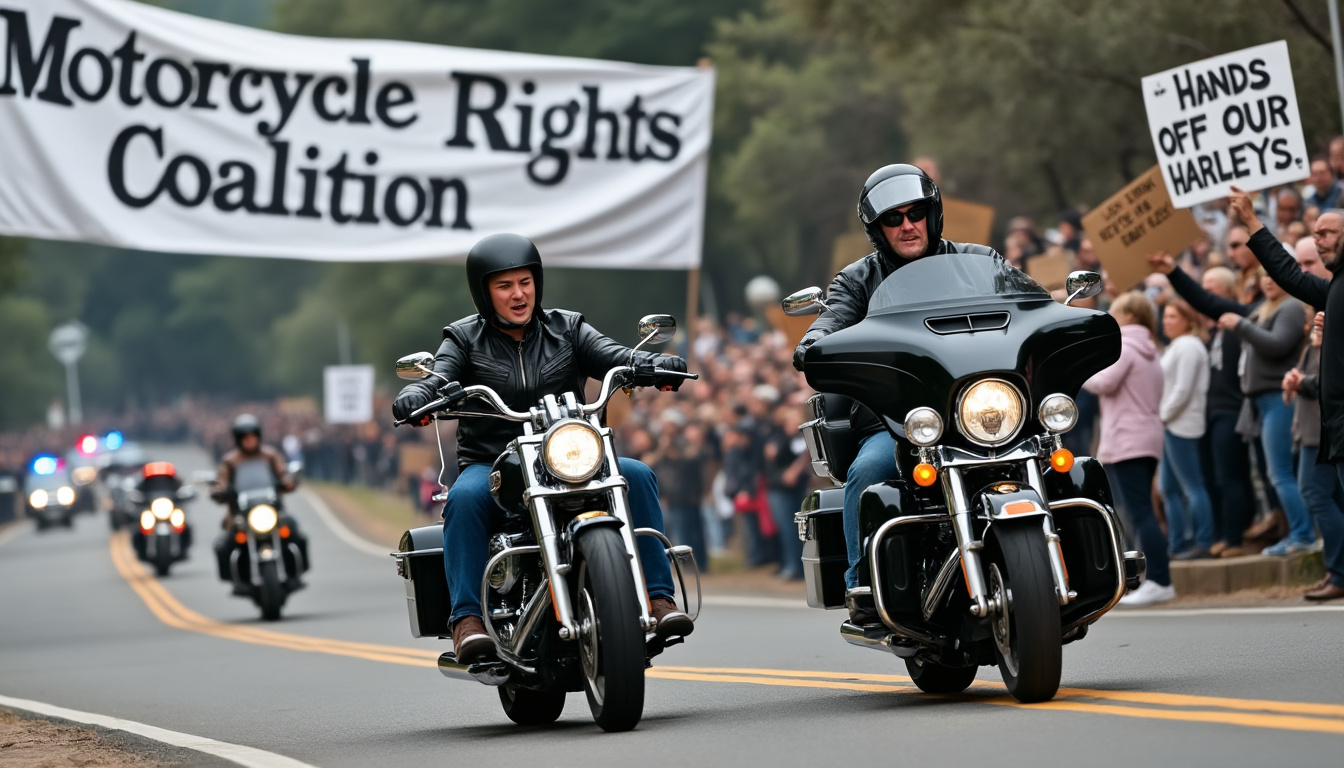the tracking of motorcyclists: focus on the motorcycle driving license

The increasing regulation of motorcyclists, new control technologies, and changes in laws related to two-wheeled driving licenses are redefining the landscape of motorcycling in France. From mandatory technical inspections to the implementation of surveillance devices such as the sound radar Hydre, numerous questions arise concerning the perception of motorcyclists and their place on the road. The motorcycle community increasingly feels a sense of anxiety in the face of this reality, perceived as a hunting ground where they become the prey.
- The strengthened regulation of motorcycling
- The new control technologies
- The feeling of being targeted
- The consequences on the motorcycle community
- Towards a future relationship between motorcyclists and institutions
The strengthened regulation of motorcycling
In March 2025, a significant reform will mark the daily lives of motorcyclists: the mandatory establishment of technical inspection for all two-wheeled vehicles. This process is part of European Directive 2014/45/EU, enacted to improve road safety in Europe. This new framework imposes regular examinations for motorcycles and scooters, rendering the question of maintenance and safety of vehicles on the road obsolete.

What is technical inspection?
The technical inspection consists of several essential checks:
- Brakes: checking the proper functioning of the braking system
- Lighting: all lights, including indicators, must function correctly
- Noise: measuring sound pollution, responsible for many offenses
- Pollution: controlled emission of exhaust gases
The response from motorcyclists has been, to date, mixed. Some emphasize the importance of ensuring a certain level of road safety, while others cry out primarily about the stigmatization of a community. Indeed, the month following the announcement, several protests took place to denounce this measure, considered an encroachment on individual freedoms.
Impact on the perception of motorcyclists
With the imposition of regular technical inspections, a new dynamic is emerging. The perception that society has of motorcyclists is likely to deteriorate as they feel caught in a normative vise. This framework is perceived as repressive, and many motorcyclists express growing distrust towards institutions. They feel that regulations mainly target two-wheeled vehicle users without considering their specificities.
| Concern elements | Frequency of worry |
|---|---|
| Regulatory overload | 75% |
| Criminalization of motorcyclists | 65% |
| Impact on personal safety | 55% |
The new control technologies
With technological evolution, control methods on French roads are diversifying. Among these is the brand new sound radar Hydre, which will be put into service starting March 2025. This device aims to track vehicles whose noise level exceeds 85 decibels. By integrating a system of microphones and cameras to capture offenders, it quickly established itself as a feared tool among motorcyclists.
The specifics of the Hydre radar
The Hydre radar is based on several principles, including:
- Acoustic detection: Identifies vehicles based on their sound level
- Precise localization: Thanks to an integrated network, it can pinpoint an offending vehicle
- Imposition of sanctions: Quickly sends tickets for excessive noise
For motorcyclists, this radar represents an additional challenge. The community, often associated with aggressive driving behaviors, finds itself increasingly targeted and potentially penalized for behaviors that are sometimes shaped by narrow traffic conditions.
Consequences of these technologies on motorcyclists
In an already tense environment between motorcyclists and institutions, the increase in control technologies fuels the feeling of heightened surveillance. The devices are often associated with stigmatization; for many, technology seems to be less about addressing irresponsible behaviors and more about the generalization of a perception that motorcyclists are to blame.
| Control technologies | Impacted users |
|---|---|
| Fixed radar | All users |
| Sound radar Hydre | Mainly motorcyclists |
| Video surveillance | Diverse mobility users |
The feeling of being targeted
In the face of these new regulations, a psychological phenomenon starts to emerge within the motorcycling community: the feeling of being systematically targeted. The new laws are perceived, whether legitimately or not, as a deliberate attempt to constrain this community.

Motorcyclist protests: a cry of despair
The recent mobilizations aim to denounce this excessive regulation and express a common frustration. Indeed, the frequency of protests has exploded between 2021 and 2023, with massive gatherings in Paris and other major cities, where motorcyclists demand their right to free circulation without fear of repression at every turn.
Misunderstanding and social stigma
This fight against the trend to criminalize motorcyclists pushes them to reflect on their image. The stereotypes of the "shadow of the motorcyclist" are fueled by widely publicized spectacular accidents. These cases reinforce the idea that motorcyclists are the main problem of road traffic, while they represent a minimal share of road users.
| Media-covered incidents | Impact on image |
|---|---|
| Speeding at 250 km/h | Propagation of stereotypes |
| Severe accidents in urban areas | Criminalization of an entire group |
The consequences on the motorcycle community
The reactions and changes in social discourse surrounding motorcyclists have consequences. Many feel the need to assert their identity and rights against a system that seems to render them invisible while seeking to regulate them.
Identity and representation of motorcyclists
A large number of motorcyclists feel the need to reaffirm themselves in relation to society. They organize events aimed at promoting motorcycling culture, thus seeking to be known otherwise than through behaviors deemed delinquent. Many Motorcycle Schools, for example, are emerging to educate young drivers about good riding practices.
A shared future? Towards a paradigm shift
For the relationship between motorcyclists and institutions to improve, constructive dialogue is essential. This involves taking into account the specificities of two-wheeled driving, as well as reflecting on how certain laws and regulations may impact the safety dynamics within this community.
| Actions by motorcyclists | Objectives |
|---|---|
| Protests | Claim rights |
| Creation of communities | Exchange values and experiences |
| Training and awareness | Improve road safety |
Towards a future relationship between motorcyclists and institutions
The current situation calls for deep reflection regarding the place of motorcyclists within society. At a time when technology continues to develop, it becomes crucial to promote a dialogue between motorcyclists and institutions to avoid widening the gap that separates them.
Disagreements persist; however, it is essential to highlight examples where constructive solutions have been found. In terms of traffic, the RiderSafe project aims to change behaviors by creating a more open framework for exchanges.
Towards an effective compromise
To improve this relationship, mutual commitment to responsible riding and taking into account the specificities of two-wheeled vehicles may be necessary. This approach could facilitate a balance between the demand for safety and the freedom of use, while fostering constructive measures to ease current tensions.
Open conclusion on the future of motorcyclists in France
As 2025 marks a pivotal year for motorcycling, promising initiatives such as the Motorcycle Safety Day show that one can hope for a positive evolution. The desire for cohabitation among all road users is not a utopia, but a goal requiring the commitment of every stakeholder.
Source: www.leblogmoto.com
Leave a Reply



Articles relatifs